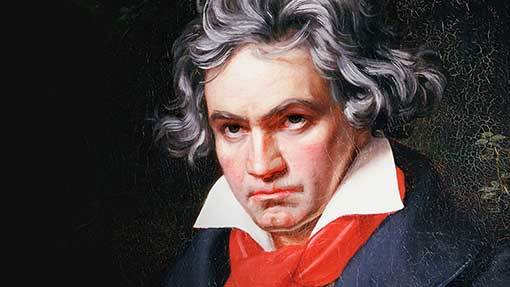Following the life story of Ludwig van Beethoven is just as fascinating as immersing into his music. The life of one of the greatest composers of all time is reflected in his symphonies and piano sonatas, but most intimately in string quartets. These are the themes of this year's Concentus Moraviae festival. Festival dramaturgist Jiří Beneš takes over.
String quartet appeared in the history of European music as a historical phenomenon suddenly – around 1760, which in itself would not be anything unusual, except that it almost immediately became fashionable with hundreds of songs, reached the first of its peaks (Mozart) in a twenty-year development and permanently found its place between instrumental sonata and symphony as one of three major forms of instrumental music. Its technical and physical accessibility accommodates the widest range of amateur experience, offering players and listeners the experience of fine music which was otherwise difficult to access for most of them.
The indescribable pleasure of active interplay in the most natural voice line-up, however, presented only one side of what it offered to the players. The other side is the paradoxical fact that the most popular form of domestic music-making has gradually become a means of the most complex testimonies of the composer's inner life: today, we listen to the compositions that were created in large quantities based on someone else's orders as milestones that mark the creative and sometimes life path of their authors. There are sixteen Beethoven's string quartets (or seventeen – Beethoven subsequently separated the extensive fugal finale from one of its last quartets as another separate composition); their sequence is also the most coherent, most eloquent and the most exciting testimony about the composer's human and creative journey.
The young Beethoven, who came from the provincial Bonn to Vienna, then the capital music city of the world, only needed a few years to become the fashionable favourite of the music loving audience. With the first group of six quartets under the opus number 18 dedicated to Prince Lobkowitz, when he was just 30 years old, right at the turn of the century, he closed the preparatory period of his creative maturity and set off on his own path that no one else had ever walked before him. The string quartet in opus 18 as a type and form is at the highest level that it reached in the 18th century: the originally undemanding shape of home based music designated for amateurish music making, matured over less than a half-century into cultivated artistic expression, bearing all the signs of a personal testimony, without deviating from its original intimate atmosphere and purpose for enjoyment of the interplay.
The situation was different with the next three-part Beethoven quartet cycle (opus 59, dedicated to Prince Razumovsky from 1806): the quartet is the mediator in a complex subjective message, a counterpart to "objectively" formulated symphony. However, changes in the shape and mission of the composition did not meet understanding among the musical public, who had so enthusiastically accepted Beethoven's first quartet works. However, the composer discovered the possibilities of a sensitive and complex internal record in the quartet that no other field could have given him. This way, he definitely determined a new mission of chamber music in the new century and established the quartet's privileged position.
The quartet then appears in his work always as a solution to an internal crisis: in 1809, opus 74 (Es-dur, Harp) marks a vital return to composing after the paralysis caused by the Napoleonic occupation of Vienna (which affected all of Beethoven's further life more than it had initially looked); a year later, opus 95 (f-minor, Serioso) was Beethoven's most dramatically right work, the chamber counterpart to the Destiny Symphony, a deep shock of his latest romantic disappointment.
The last five quartets from the years 1824-1826 belong to Beethoven's late period, the mysterious and unexpected outburst of creative energy after a number of "dog years" of creative decline and depression. After the surge with his Ninth Symphony and Solemn Mass the ageing and ill, yet again standing and invincible warrior Beethoven wrote three, four, five major quartet compositions, actually six opus numbers (127, 130–133 and 135, one of them belongs to the aforementioned separated fugue) as his last message, barely understandable discussions with eternity about life and death, a constantly renewing commitment for each next generation of performers and listeners, the most important pieces ever created in chamber music.































